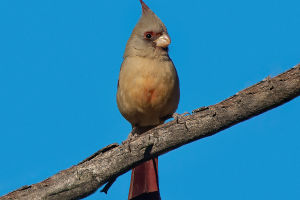Giraffes, often referred to as the giants of the savannah, are the tallest mammals on Earth. With their unique long necks and legs, they stand out as one of nature's most fascinating creatures.
They belong to the genus Giraffa in the family Giraffidae and are primarily found in Africa. While many people know them for their towering height and distinctive spots, there’s much more to these animals than meets the eye.
In this article, we’ll explore their habitat, diet, social behavior, and much more, giving you an in-depth look at what makes giraffes so special.
The Unique Features of Giraffes
Giraffes are known for their long necks, which can measure up to 6 feet, and their long, sturdy legs. These remarkable features allow them to reach heights of up to 18 feet, making them the tallest land mammals. Their necks, which are not as flexible as one might think, are supported by just seven vertebrae, the same number found in most mammals. Their legs, on the other hand, help them run at speeds of up to 35 miles per hour when necessary.
Giraffes’ distinctive coat patterns, which consist of brown patches separated by white or cream-colored fur, are unique to each individual, much like human fingerprints. These patterns are also believed to help them blend into their surroundings, providing camouflage in the wild.
Where Do Giraffes Live?
Giraffes are native to sub-Saharan Africa, where they inhabit savannahs, woodlands, and open grasslands. They are particularly common in countries such as Kenya, Tanzania, South Africa, and Namibia. Their ability to thrive in a variety of habitats is partly due to their herbivorous diet, which consists mostly of leaves, fruits, and flowers. They are especially fond of the leaves of the acacia tree, which they can reach thanks to their long necks. Giraffes also rely on water sources such as rivers and watering holes, which they visit regularly to hydrate.
Giraffes' Diet and Feeding Habits
Giraffes are herbivores, meaning their diet consists entirely of plant material. They spend a significant portion of their day eating, using their long tongues (which can reach lengths of up to 18 inches) to grasp leaves from tall trees. Acacia trees are a favorite, but they will also feed on shrubs, fruits, and flowers. Interestingly, giraffes have a unique way of feeding. Because of their height, they are often able to reach leaves and branches that other herbivores can’t, which gives them an advantage when it comes to finding food in the wild. They are selective eaters, preferring tender, young leaves and flowers.
Social Behavior of Giraffes
Giraffes are social animals that live in groups, known as herds. However, their social structure is less rigid than that of many other species. Female giraffes, often accompanied by their calves, tend to form smaller, more stable herds. On the other hand, male giraffes, known as bulls, are more solitary but may form loose bachelor groups.
Giraffes communicate with each other through a range of vocalizations, body language, and even low-frequency sounds that are inaudible to the human ear. Despite their generally peaceful nature, male giraffes can engage in a behavior known as "necking," where they use their necks as weapons to fight for dominance and the right to mate with females.
Giraffe Conservation and Status
Sadly, giraffes are classified as "vulnerable" by the International Union for Conservation of Nature (IUCN). Their populations have been declining in recent years, largely due to habitat loss, poaching, and human-wildlife conflict. While they are not yet critically endangered, some giraffe subspecies are more at risk than others. Efforts are being made to protect giraffes and their habitats through wildlife conservation programs, anti-poaching laws, and the establishment of protected areas. Zoos and wildlife reserves play an essential role in the preservation of giraffes, with more than 1,600 giraffes living in captivity as of 2010.
Fun Facts About Giraffes
1. Giraffes have the same number of neck vertebrae as humans (seven), despite their long necks.
2. Their tongues are prehensile and can extend up to 18 inches, allowing them to grab branches and leaves with ease.
3. Giraffes are able to run at speeds of up to 35 miles per hour, making them one of the fastest animals on the savannah.
4. Giraffes' unique coat patterns serve as camouflage, helping them blend into their environment.
5. A giraffe's heart can weigh as much as 25 pounds and is necessary to pump blood up their long necks.
Final Thoughts
Giraffes are truly extraordinary creatures that have captivated people worldwide with their towering height, graceful movements, and striking features. These majestic animals have earned a special place in nature’s wonders. However, they face serious challenges in the wild, including habitat loss and poaching. By supporting conservation efforts and raising awareness, we can help ensure that giraffes continue to roam the African savannah for generations to come.
Lykkers, what do you think about these magnificent giants? If you enjoyed learning about them, don’t forget to share this article with your friends and help spread the importance of protecting giraffes!


